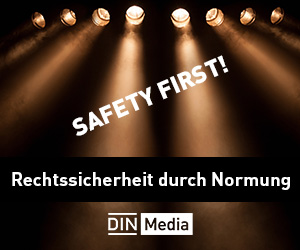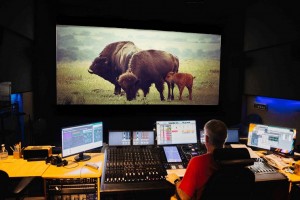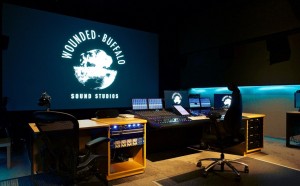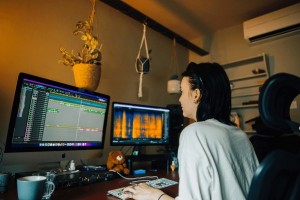Aktuelle News & Schlagzeilen
Wounded Buffalo Sound Studios create audio nature soundscapes with Avid
Nestled in the heart of Bristol, England, Wounded Buffalo Sound Studios, known for their work in natural history documentaries, has carved out a niche in the world of audio post production. “Most things are filmed on very long lenses”, says veteran mixer Ben Peace. “So, you can film something from 400 yards away, but you can’t easily capture the sound from that distance.”
This often means that when the team receives footage, the accompanying audio is sometimes minimal or of poor quality. In the field, audio is rarely a priority, or even available, with shoots often capturing “first-ever” seen footage in extreme environments. “We do get some atmospheric sound if we’re lucky”, Peace continues. “Sometimes they’ll leave a remote camera with a built-in mic somewhere, and even though the sound can be pretty terrible, it’s really useful. It lets us know what we’re supposed to be aiming for.”
Natural history content requires attention to detail. The team regularly consults with scientists and episode producers familiar with the footage or landscapes they depict to ensure the authenticity of the sound. “Each layer is pretty fastidiously researched”, notes studio manager Jim Jacobs. “The wrong bird at the wrong time of day can ruin the authenticity.”
“We often work with footage that needs the sound to be reconstructed entirely. This means creating a soundscape that is believable yet captivating”, Peace explains. One of the more surprising aspects of natural history sound work is dealing with underwater audio. Given the important role of clear underwater audio in ocean scenes, the team advises recording teams on how to capture it for best effect - for example, stopping the boat’s engine so that the noise doesn’t interfere with natural sounds.
“Underwater stuff is actually quite tricky”, says Jacobs. “Swimming generally doesn’t make much noise, but when you see it, it kind of needs to make a sound to look right. So, if you’re underwater and a dolphin swims past the camera and above you, you can follow it with sound.”
Wounded Buffalo’s facilities include three dubbing theaters featuring Dolby Atmos technology and six edit suites: Dubbing Theatre A (Dolby Atmos): Avid Pro Tools HDX system with S6 M40 console, and wall-to-wall speakers. Dubbing Theatre B: Avid S6 control surface and Pro Tools. Dubbing Theatre C: Two Avid S1 modules and Avid Dock. Sound Editing Suites: Pro Tools with various plugins including iZotope RX, a noise reduction software package.
The turning point for Wounded Buffalo came with the integration of Avid’s S6 control surface, marking a significant upgrade. “When the S6 came along, we jumped ship and went to Avid”, says Peace. “It’s good at keeping your eggs in one basket with integration.”
Looking ahead, Wounded Buffalo aims to diversify beyond natural history, adapting to the evolving demands of the industry. “We’re seeing a bit of an upturn in theatrical work”, Jacobs concludes. “The technology used to shoot natural history is so amazing that people want to see it on the big screen. We’re now quoting for theatrical audio more frequently.” Immersive audio formats like Dolby Atmos have also become a significant part of their work as the industry changes.
(Photos: Avid Technology/Wounded Buffalo Sound Studios)
SCHLAGZEILEN
news archiv
suche
© 1999 - 2025 Entertainment Technology Press Limited News Stories










